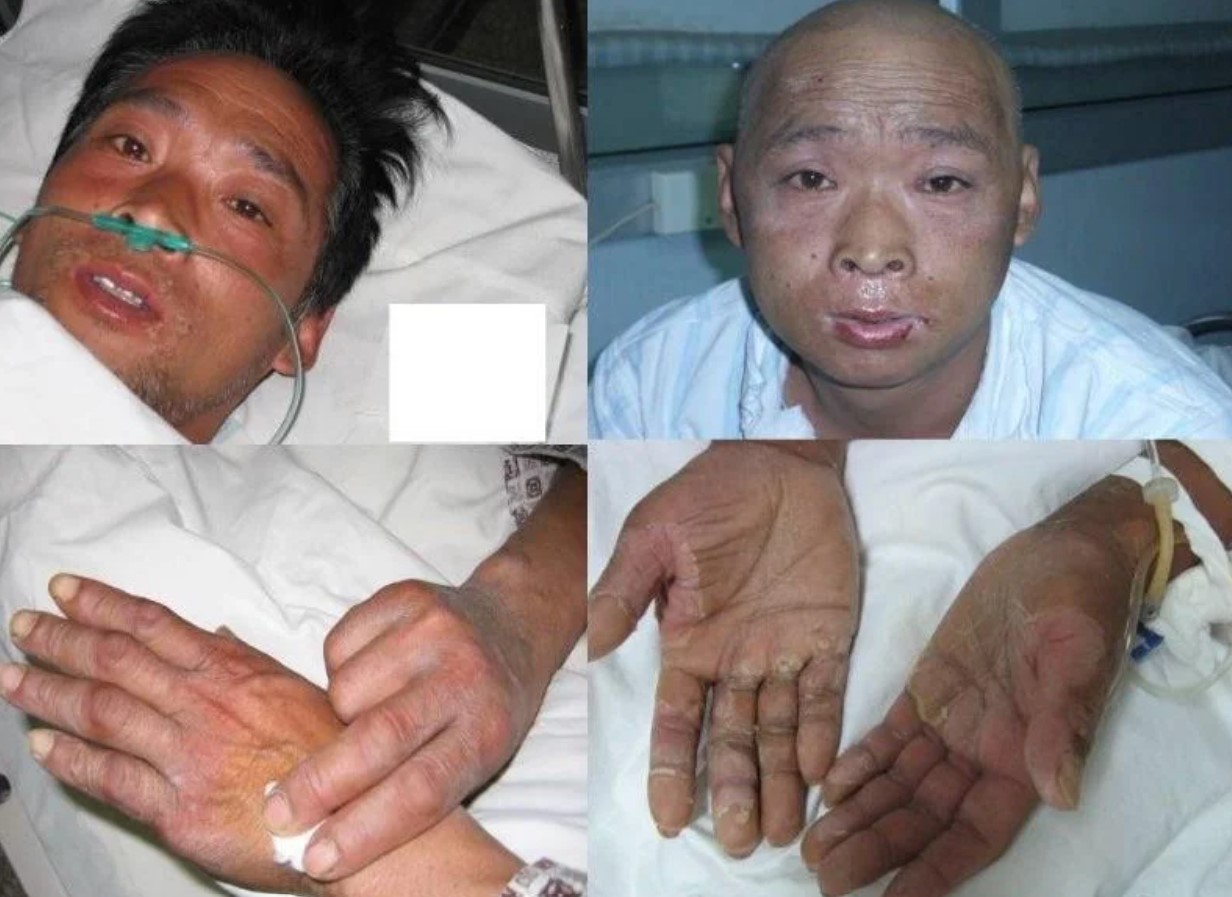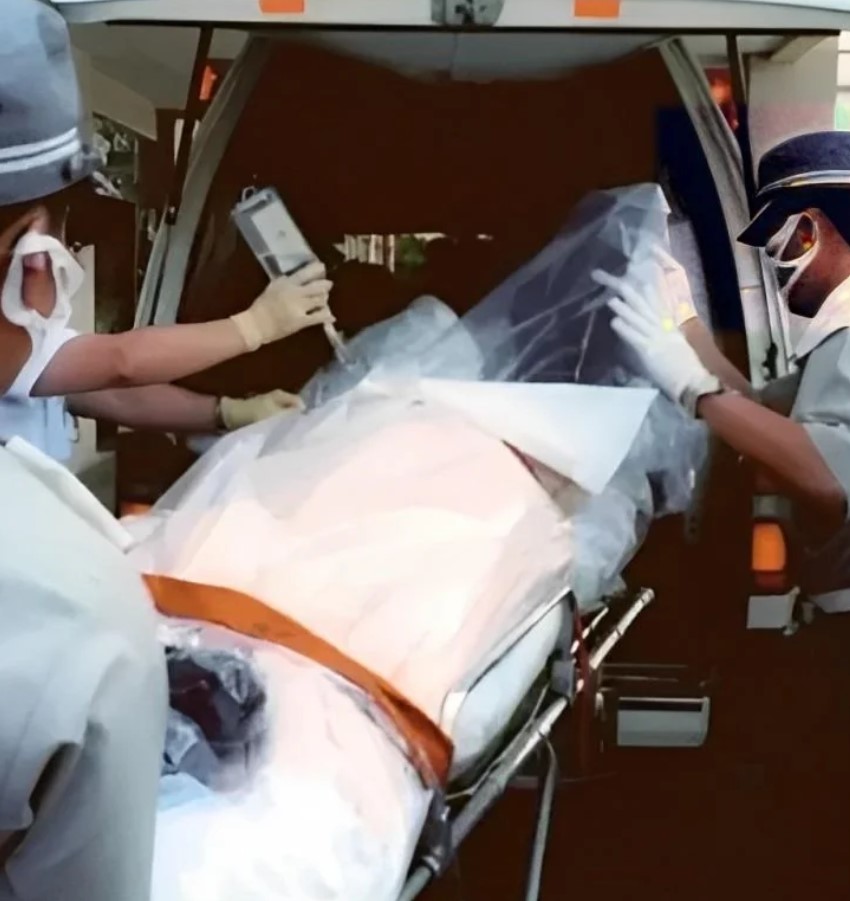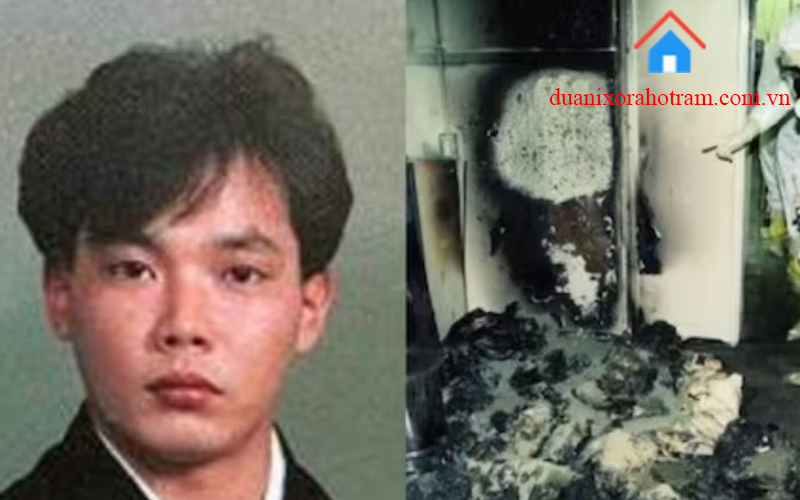Hisashi Ouchi Real Photo No Blur and Exploring the Tragic
In 1999, the Tokaimura nuclear power plant in Japan experienced one of the most catastrophic nuclear accidents in history. This tragic event not only highlighted the potential dangers associated with nuclear energy but also exposed the devastating human cost when safety measures are neglected. At the heart of this disaster was Hisashi Ouchi, a 35-year-old technician, who suffered from a critical level of radiation exposure that eventually led to his death after enduring 83 days of unimaginable agony. Images such as Hisashi Ouchi real photo no blur illustrate the severe physical impacts of radiation exposure, bringing a stark visual reality to this tragic event.

Hisashi Ouchi was part of a small team at the Japan Nuclear Fuel Conversion Company (JCO), tasked with preparing fuel using uranium by a process that should have been routine. However, on September 30, 1999, due to a fatal mix of procedural shortcuts and operational oversight, a criticality accident occurred. This unleashed a lethal amount of gamma radiation, primarily affecting Ouchi, who was standing closest to the uranium processing tank at the moment of the accident.
The severity of the incident was unprecedented. Ouchi was exposed to 17 Sieverts of radiation, a dose far exceeding the threshold considered potentially lethal. His body was immediately incapacitated, with his internal organs severely damaged and his DNA shattered beyond repair. This exposure led to a rapid decline in his health, marked by intense pain and rapid deterioration of his physiological functions.
Ouchi’s ordeal brought to light not only the physical toll of such accidents on individuals but also the profound ethical questions they raise regarding medical intervention and patient autonomy. His story is a stark reminder of the inherent risks of nuclear power, the importance of rigorous safety protocols, and the deep ethical considerations that must be addressed in the wake of such events.
| Aspect | Details |
|---|---|
| 1999 Tokaimura Accident Overview | One of the most catastrophic nuclear accidents, highlighting the dangers of nuclear energy and the severe human costs of neglecting safety measures. |
| Hisashi Ouchi | 35-year-old technician who suffered critical radiation exposure during the accident, leading to his death after 83 days of suffering. His case underscores the severe physical impacts of radiation. |
| Cause of Accident | Occurred at the Japan Nuclear Fuel Conversion Company (JCO) due to procedural shortcuts and operational oversight, causing a criticality accident and massive radiation release. |
| Medical and Ethical Impact | Ouchi’s ordeal raised significant ethical questions about medical intervention and patient autonomy, emphasizing the importance of safety protocols in nuclear power operations. |
Contents
Background Information
Japan’s reliance on nuclear power is a direct consequence of its geographic and economic conditions. With scant natural resources to fuel power generation, Japan has historically leaned on nuclear energy to meet a significant portion of its energy demands. This strategic decision was catalyzed by the oil shocks of the 1970s, prompting a national pivot towards more stable and reliable energy sources. By the late 20th century, Japan had established itself as one of the world’s most prolific users of nuclear technology for power generation, emphasizing its critical role in the nation’s energy policy.
The Tokaimura nuclear power plant, located in the Ibaraki Prefecture, northeast of Tokyo, was emblematic of Japan’s nuclear ambitions. Established to support the country’s burgeoning needs for nuclear fuel processing as well as research, Tokaimura was not just a power generation facility but a critical hub for nuclear fuel processing and research. The plant housed full nuclear reactors, research institutes, fuel enrichment facilities, and nuclear waste processing facilities. It played a pivotal role in the community, employing a significant portion of the local population and contributing to the local economy. However, its strategic importance also underscored the potential risks associated with nuclear facilities, particularly when safety protocols were compromised.
| Section | Details |
|---|---|
| Japan’s Energy Context | Relies heavily on nuclear power due to limited natural resources. Shift influenced by the 1970s oil shocks. Nuclear power is central to national energy policy. |
| Tokaimura Nuclear Power Plant | Located in Ibaraki Prefecture, northeast of Tokyo. Serves as a facility for nuclear fuel processing, research, and power generation. Key for local employment and economy. Highlights risks associated with nuclear facilities when safety protocols fail. |
The Incident
The sequence of events leading to the tragic accident on September 30, 1999, at the Tokaimura plant began with a deviation from standard safety procedures. Hisashi Ouchi, born in 1965 in Japan, along with two other technicians, Masato Shinohara and Yutaka Yokokawa, were tasked by their employer, the Japan Nuclear Fuel Conversion Company (JCO), to produce a batch of fuel by a process that involved handling uranium. To meet pressing production deadlines, they bypassed several critical safety protocols.
The technicians prepared a solution containing uranium by pouring it into a precipitation tank, not realizing that they had significantly exceeded the critical safety limit for uranium quantity. This error was compounded by the use of manual methods instead of the mechanized mixing processes that were designed to prevent such accidents. At approximately 10:35 AM, the mixture reached a critical state, initiating an uncontrollable nuclear chain reaction characterized by a frightening emission of a blue flash of radiation, known as Cherenkov radiation.
The immediate aftermath of the accident was catastrophic. Hisashi Ouchi, standing closest to the tank, received a massive dose of radiation, primarily gamma rays, which are highly penetrating and damaging to biological tissues. The exposure was so severe that it completely destroyed his white blood cells and caused severe radiation burns throughout his body. Ouchi’s colleagues also received high doses of radiation but not to the same extreme as Ouchi.
Emergency response teams were quick to act, evacuating the plant and instituting a critical emergency response to address the radiation exposure. Ouchi and his colleagues were immediately transported to specialized medical facilities equipped to handle severe radiation injuries. However, the damage inflicted was profound and irreversible, highlighting the lethal nature of nuclear accidents and the critical importance of stringent safety measures in nuclear operations.
This incident not only marked a significant moment in Japan’s nuclear history but also triggered a reevaluation of nuclear safety protocols both domestically and internationally. The tragic outcomes underscored the dire consequences of procedural noncompliance and the ever-present need for rigorous safety standards in the nuclear industry.
| Event | Details |
|---|---|
| Deviation from Safety Procedures | Technicians at Tokaimura plant bypassed critical safety protocols to meet deadlines. |
| Error in Handling Uranium | Uranium solution poured into a tank exceeded the safety limit, using manual instead of mechanized methods. |
| Nuclear Reaction Triggered | Mixture reached critical state at 10:35 AM, emitting Cherenkov radiation. |
| Immediate Aftermath | Hisashi Ouchi received a massive dose of radiation, causing severe injuries and destroying his white blood cells. |
| Emergency Response | Immediate evacuation and transport of victims to specialized medical facilities. |
| Impact on Nuclear Safety | Incident triggered a reevaluation of safety protocols in Japan and internationally. |
Hisashi Ouchi’s Medical Ordeal
Upon his arrival at the National Institute of Radiological Sciences shortly after the accident, Hisashi Ouchi was in a dire state, exhibiting symptoms that were severe and immediate due to his unprecedented exposure to radiation. His condition was critical, with a near-complete depletion of his white blood cells, making any recovery prospects grim. He was transferred to the University of Tokyo Hospital, where a team of top medical professionals began an exhaustive series of interventions in a desperate attempt to save his life.

Medical strategies included multiple skin grafts and over a dozen blood transfusions intended to stabilize his condition and restore his blood’s cellular components. However, the most groundbreaking attempt was the use of peripheral stem cell transplantation. This method, which was still relatively experimental at the time for radiation poisoning, involved harvesting stem cells from a donor, in this case, Ouchi’s sister, in the hope that these could regenerate his destroyed bone marrow and restore his body’s ability to produce healthy blood cells.
Despite these efforts, Ouchi’s ordeal was characterized by intense physical agony. His body’s tissues were breaking down, leading to continuous bleeding and severe pain. The radiation had caused his chromosomes to fragment, rendering the body’s natural repair mechanisms ineffective. His skin, too, deteriorated despite repeated grafts, which could not take hold because his cellular structure could not regenerate.
The emotional and psychological toll on Ouchi was profound. He reportedly suffered from extreme anxiety and depression, exacerbated by his physical condition. His pain was so intense that he repeatedly begged the medical staff to let him die, stating that he was not a “lab rat.” These pleas, however, were set against a complex backdrop of hope, desperation, and the outer boundaries of medical science.
| Aspect | Details |
|---|---|
| Initial Medical Response | Upon arrival at the National Institute of Radiological Sciences and then transfer to the University of Tokyo Hospital, Ouchi was in a critical condition with a near-complete depletion of white blood cells. |
| Treatment Approaches | Treatments included multiple skin grafts, over a dozen blood transfusions, and a groundbreaking peripheral stem cell transplantation using cells from his sister. |
| Physical Condition | Ouchi suffered intense pain due to continuous tissue breakdown, bleeding, and failed skin grafts, as his body’s repair mechanisms were ineffective due to chromosome damage from radiation. |
| Emotional and Psychological Impact | Ouchi experienced severe anxiety and depression, exacerbated by physical agony. He expressed a desire to die, highlighting the ethical complexities of his prolonged medical treatment. |
Ethical and Human Rights Considerations
The decision to continue medical interventions despite Hisashi Ouchi’s severe suffering and his explicit requests for cessation of treatment brings to light significant ethical and human rights issues. The case prompts a critical examination of the extent to which medical personnel should go to preserve life, especially when the quality of that life is debatable and the patient’s suffering is profound.
At the core of the ethical debate is the principle of patient autonomy versus the medical imperative to save lives. Ouchi’s case raised questions about the right of a patient to refuse treatment, particularly in experimental contexts where the outcomes are uncertain and the processes potentially agonizing. His situation was further complicated by his family’s wishes, which sometimes contradicted his own, and the unprecedented nature of his condition, which placed medical staff in uncharted ethical waters.
Moreover, the use of experimental treatments highlighted the responsibilities of medical professionals to fully inform patients and their families about the potential outcomes and suffering involved. It also underscored the need for rigorous ethical oversight in situations where the boundaries of medical science and human rights intersect. Ouchi’s case serves as a stark reminder of the necessity for clear guidelines and moral limits in the pursuit of life-extending treatments, particularly when those treatments may extend suffering.
This tragic story remains a poignant lesson in the complexities of medical ethics, emphasizing the delicate balance between advancing medical science and respecting individual rights and dignity. It challenges us to reflect on how far we are willing to go in the name of potential medical progress and at what cost to human suffering.
| Issue | Details |
|---|---|
| Medical Interventions vs. Patient Suffering | The continuation of medical interventions despite Ouchi’s severe suffering and requests to stop treatment raises ethical and human rights concerns regarding the extent to which life should be preserved. |
| Patient Autonomy vs. Medical Imperative | The case highlights the ethical conflict between patient autonomy and the medical imperative to save lives, especially in experimental settings with uncertain outcomes and significant patient suffering. |
| Family Wishes vs. Patient Wishes | Ouchi’s situation was complicated by his family’s wishes, which sometimes contradicted his own, presenting a challenge for medical staff in navigating these conflicting desires. |
| Responsibilities of Medical Professionals | Emphasizes the need for medical professionals to inform patients and their families about potential outcomes and the suffering involved in experimental treatments. |
| Guidelines and Ethical Oversight | Underscores the necessity for clear guidelines and ethical oversight in medical treatment, especially in cases that test the limits of medical science and human rights. |
| Impact on Medical Ethics | The case serves as a lesson in medical ethics, stressing the balance between advancing medical science and respecting individual rights and dignity. |
Impact and Aftermath
The Tokaimura nuclear accident not only devastated the lives of Hisashi Ouchi and his family but also had significant repercussions for his colleagues and the broader community. Masato Shinohara, who was also exposed to high levels of radiation, suffered severe radiation burns and underwent several similar treatments, including stem cell transplants. Despite fighting for his life for seven months, Shinohara succumbed to multiple organ failures, illustrating the profound and lethal nature of severe radiation exposure. Yutaka Yokokawa, the supervisor, experienced less severe exposure but still faced health challenges and was hospitalized for several months.
The legal and financial consequences for the Japan Nuclear Fuel Conversion Company (JCO) were substantial. JCO faced intense scrutiny and criticism for its failure to adhere to safety protocols, leading to criminal charges against several executives and safety managers. The company was fined, and the government mandated significant compensation payouts, which amounted to approximately $121 million to settle claims from nearly 6,875 local residents affected by the radiation exposure. This financial repercussion underscored the economic impact of safety failures in such high-stakes industries.
The incident prompted a rigorous reevaluation of nuclear safety protocols both in Japan and internationally. In Japan, the government implemented stricter regulations and oversight mechanisms, including more rigorous training for nuclear technicians and enhanced safety measures at all nuclear facilities. The global nuclear industry also reflected on the Tokaimura accident, leading to better safety standards and practices designed to prevent similar accidents.
| Impact Area | Details |
|---|---|
| Impact on Individuals | Masato Shinohara suffered severe radiation burns and eventually succumbed to multiple organ failures after seven months. Yutaka Yokokawa also faced significant health challenges but survived. |
| Legal and Financial Repercussions for JCO | JCO faced criminal charges and fines for failing to adhere to safety protocols, with compensation payouts mandated by the government totaling approximately $121 million to nearly 6,875 affected residents. |
| Nuclear Safety Protocols | The accident prompted Japan to implement stricter regulations and oversight mechanisms, including enhanced training for nuclear technicians and improved safety measures at nuclear facilities. |
| Global Impact | The global nuclear industry reevaluated and improved safety standards and practices to prevent similar incidents, reflecting on the lessons from the Tokaimura accident. |
The legacy of Hisashi Ouchi is a powerful reminder of the human cost associated with technological and human errors in high-risk industries. His tragic ordeal and the subsequent death brought international attention to the dangers of nuclear power when combined with insufficient safety measures. The Tokaimura accident serves as a stark lesson in the importance of rigorous safety protocols, the need for transparent and accountable corporate practices, and the critical role of government oversight in protecting both workers and the public.
Moreover, Ouchi’s story is a poignant testament to the ethical challenges faced in modern medicine and the nuclear industry. It raises profound questions about the balance between using cutting-edge medical technologies to extend life and respecting a patient’s autonomy and quality of life. His experience compels a rethinking of how high-risk industries are regulated and managed, emphasizing that technological advancement should not outpace safety and ethical considerations.
The lessons learned from the Tokaimura accident have driven improvements in nuclear safety standards, but they also serve as a reminder of the ongoing need for vigilance, ethical integrity, and humanity in the face of technological progression. As the world continues to rely on complex technologies in various high-stake industries, the story of Hisashi Ouchi remains a crucial narrative in understanding the intersection of human vulnerability and technological power.
Global News -

